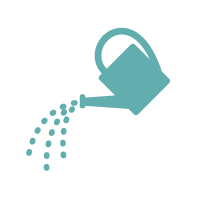Overview
An interdepartmental health equity team at the Tacoma-Pierce County Health Department, Washington, developed a Health Equity Assessment report, including numerous maps, and used various tools that have facilitated internal capacity building and external relationship building to advance Health in All Policies at the city and county level.
Who Took This On
Office of the Director, Tacoma-Pierce County Health Department, Washington
Ways You Can Get Started
- Develop a health equity team involving representatives from all health department programs/divisions.
- Use the Health Equity Inventory Tool (docx) to document existing work and identify opportunities to advance health equity. Use the Health Equity Planning Assessment Tool (docx) to help think through and prioritize those opportunities.
See Advice for Local Health Departments below for more ways to take action.
What Sparked This?
Strategic plan process highlights need for achieving health equity
Between 2009 and 2011, the Tacoma-Pierce County Health Department (TPCHD) conducted a strategic planning process involving staff, the Board of Health, and community organizations. Through the process, health equity emerged as an important concept in the vision, data, and proposed strategic directions, as outlined in the 2011-2015 TPCHD Strategic Plan. As a result, the health department began grappling with the question of what it means to achieve health equity and mobilized funds to support health equity work.
Funding facilitates planning to include health equity in health department operations
In late 2011, TPCHD was awarded a Community Transformation Grant (CTG) from the Centers for Disease Control to address 5 key areas through a partnership network. More details about TPCHD’s process, how key stakeholders defined and would measure health equity, and their strategy, process, and goals are available in their CTG Report on Working Together to Promote Health Equity. Although CTG funding was unexpectedly cut short, the grant was one of the enabling factors on the road toward health equity becoming a more established part of the way the health department operates.
Health equity coordinator hired into supportive authorizing environment
In 2014, TPCHD leaders secured funding and hired a new Health Equity Coordinator. The new Health Equity Coordinator was intentionally placed in the Office of the Director and reports directly to the Deputy Director of Health. According to the current Health Equity Coordinator, having this direct report has carried a lot of weight with the changes that he’s been asking of staff. At the same time, being situated in the Office of the Director and not having to report to a specific division has helped staff view his position as a department-wide asset.
Cross-divisional health equity team formed
One of the first activities of the new coordinator was to form a health equity team representing 12 program areas across the health department. The team is responsible for developing strategies and recommendations and implementing programs across the department. Specifically, the team is comprised of the Health Equity Coordinator, the Deputy Director of Health, 4 members from Environmental Health, 2 from Communicable Disease, 2 from the Strengthening Families program, and 2 from Administration. The composition of the health equity team varies depending upon staff capacity (e.g., individuals going on leave, data skills, needs, etc.) but it generally has representation from across the department.
Program Description
Health equity report development and dissemination
Once the health equity team was formed, one of their first responsibilities was to develop a Health Equity Assessment, the purpose of which was to “strengthen our internal work as well as collaborate more effectively with partners and the community.” The Health Equity Coordinator facilitated a process involving every program in the department, where each program had to develop a section of the report.
As much as possible, the Coordinator sought to standardize each program’s section — having them define the issue they worked on, the scope of the problem, what the data revealed, and any inequities they observed, and including maps. He also limited their write up to just 3 paragraphs in an effort to have a range of people (from oversight and strategic to operational roles) be involved and think about the issue of health equity on a more level playing field. He served as the main content editor, responsible for fine tuning messages. Then the draft report was sent to a communications editor for a final review.
The Health Equity Coordinator notes that the full report is rarely used or referenced, but that the report was the impetus for creating maps and a 2 pager summarizing the key findings, which have been disseminated widely.
The Power of the 2-Pager
The Health Equity Assessment 2 pager has become a critical tool to change the narrative around equity. It is a simple, straightforward document that illustrates the need for the department shift from clinical care to social and economic factors.
Data enables conversations about Health in All Policies
Armed with the maps and 2 pager, the Health Equity Coordinator distributed the story about health inequities widely across the City of Tacoma and Pierce County in an effort to build relationships with community groups, sister city and county agencies, city governments, and others. In particular, TPCHD focused on building relationships with all 24 judges in the Pierce County Superior Court, and the transportation and parks agencies.
When meeting with government agencies, the Coordinator asked them to recognize the connection of health to their work, with the ultimate goal of trying to move toward Health in All Policies. He specifically asked what type of Health in All Policies approach might be most effective for their jurisdiction to better consider health — e.g., using the Health Lens Analysis Tool for decision-making processes, doing a Health Impact Assessment, bringing health data and technical assistance to help ensure health is part of the comprehensive planning effort, etc. These discussions have been fruitful, and TPCHD is now working with several agencies on comprehensive land use planning and bringing data to other agencies. He notes that this work “has helped lead to shifts around common priorities and common focus areas geographically.”
Using health equity tools to inform decision making and planning
To help operationalize equity both internally and externally in the health department, the Coordinator has gathered a number of tools from other jurisdictions and organizations that he shares with city/county departments and agencies. To date, 3 of the most helpful tools have been the Health Lens Analysis Tool, the Health Equity Inventory Tool, and the Project Planning Tool.
The Health Lens Analysis Tool is geared toward decision makers, city managers and leaders, engineers, architects, and non-governmental organizations to assess the potential impacts of proposed policies and decisions and identify opportunities to improve a policy’s potential impacts on the social, economic, and environmental determinants of health.
The Health Equity Inventory Tool helps program staff assess how equity plays out in a process — e.g., which populations benefit from a program; how program activities address social, economic, and environmental conditions; how a program engages community; and how it advances external or internal policies that address key equity issues. The Health Equity Coordinator has found this tool to be very helpful in supporting program staff to: consider different facets of equity, conduct an inventory of what they are already doing, and create opportunities to brainstorm together about ways to do things differently.
The Project Planning Tool then takes the opportunities identified in the inventory tool and scores them based on the level of effort needed for implementation and potential impact, and then helps staff prioritize the opportunities for action.
Outcomes and Impacts
-
Health department programs shifting to be more participatory and data based
To date, the most tangible change has been internally among the 250 staff in the health department. The Health Equity Coordinator notes that many programs have shifted their work to become more participatory, to use more authentic community engagement methods, and to shift policies and services to better reflect the highest need areas. For example, as a result of the health equity work, TPCHD developed a mobile market readiness assessment to address food access in Tacoma. Other programmatic shifts include: prioritizing environmental cleanup based on high poverty rates and neighborhood need; siting immunization resources in higher-poverty schools; incorporating employment and economic supports into Health Department Family Support Centers; and opening a field office in a high-poverty rural area of the jurisdiction.
-
Sister agencies asking for support
Some TPCHD sister agencies have begun asking for additional support to have lengthy conversations about equity, race, and health. To date, TPCHD has worked with the local Parks Department, Human Services Department, Superior Court, Housing Authority, Tacoma Office of Equity and Human Rights, Education Service District, and many others to better move toward equity in their work. Partnership activities include giving presentations to the other agencies, providing technical support to agencies as needed, and collaborating on specific projects. The Health Equity Coordinator notes that he is trying to support people to “do the hard work of understanding the difference and then moving from conceptual equity to operational equity.”
-
Health equity tools help facilitate reflection
Whether in meetings with health department staff or other city or county agencies, or in conference presentations, the health equity tools have been helpful resources to facilitate reflection about potential action steps. For example, TPCHD was invited to present data on perinatal birth inequities at a recent conference of maternal and child health providers from around the country. The Health Equity Inventory Tool and the Project Planning Tool helped the providers grapple with inequities from their vantage points and come away from the conference with tangible opportunities to take action in new ways.
-
Prioritizing communities of focus
Thanks to the Health Equity Assessment and accompanying maps, the department identified 3 communities to focus on for the coming year. They made a commitment to work creatively and collaboratively with these “communities of focus” to identify their priorities and mobilize resources to address those priorities — all in partnership with the many other agencies and partners working to serve the needs of those communities.
Future Steps
The Department is currently grappling with how to reorganize itself to enable more health equity and policy work. Moving forward, TPCHD staff plan to continue building relationships with the other city and county agencies to advance health in comprehensive planning efforts.
With their tools in hand and established relationships with jurisdictions, agencies, and organizations, TPCHD will continue to look for opportunities to implement the inclusion of health considerations into as many decision-making processes throughout the county as possible. Many near-term opportunities exist with local governments to begin highlighting health considerations as part of their policy development processes.
Advice for Local Health Departments
-
Find your champions on the inside
In any institution — health department, city agency, city council, or organization — it is critically important to have champions on the inside in order to effect change. Those working within their institutions will be more effective at carrying the message than outsiders. This also helps build staff buy-in. Having representatives from across the health department on the health equity team helps garner support within the departments.
-
Make a 2 pager
The 2 pager is used much more frequently than the full Health Equity Assessment report. Although the report is the backbone for presentations and an entryway to talk about difficult issues, the 2 pager is the elevator speech for the larger report and is easier to share widely. The 2 pager includes clear, short messages about the roots of health inequities, some compelling statistics, and easy-to-read visuals.
-
Make the case to other agencies
Think about your work from the perspective of the other agencies you are trying to influence. Collaboration won’t happen if health department staff can’t make the case for why they should be involved in social and economic policies. In order to change the narrative and begin to do Health in All Policies work, you need to be able to make a compelling case and get buy-in.
-
Reduce barriers to agency participation
To enable people in education, community development, land use, and zoning to all be doing Health in All Policies, barriers need to be reduced. For example, Health Impact Assessments are focused on health impacts, take time, and are costly. The coordinator found that the Health Lens Analysis Tool is the fastest, lowest-impact way to put a tool in people’s hands that will identify potential health inequities that might otherwise have been glossed over. Don’t let perfect be the enemy of good — e.g., insisting that health be understood and presented perfectly in order to have others take action.









